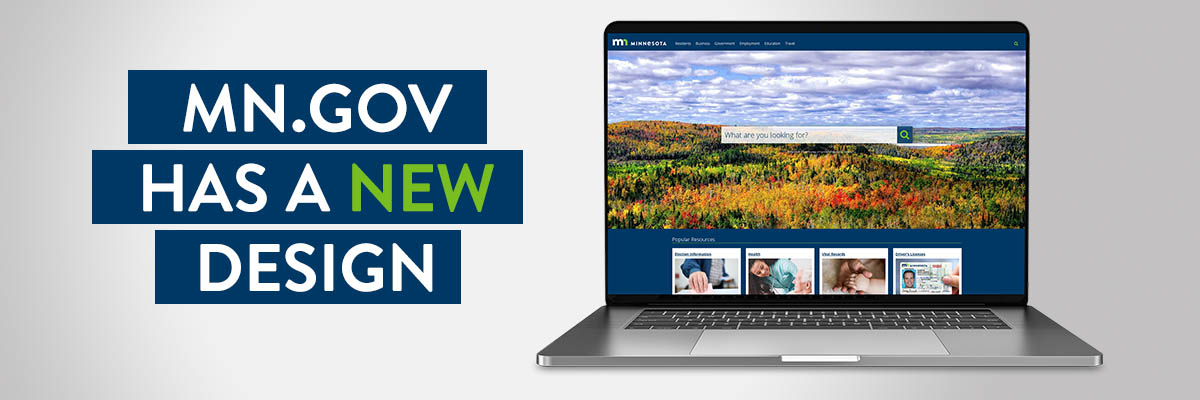State of Minnesota’s Redesigned Web Portal Connects Minnesotans to Digital Government Resources
10/22/2018 12:00:00 AM

October 22, 2018
St. Paul, MN: On October 22, 2018, the State of Minnesota unveiled a new website design for mn.gov, the State of Minnesota’s online portal.
The portal has long been a destination for Minnesota residents and businesses, who visit for up-to-date state news and to locate information and digital resources. The portal serves as a front door to more than 500,000 web pages and documents found across more than 70 Minnesota agency, board, council and commission websites. The new site design, provided by Minnesota IT Services (MNIT), makes it easier, faster and more intuitive for visitors to get the information they’re looking for.
“Mn.gov is the entry point to hundreds of online services and, it benefits more than 5.5 million Minnesotans. Minnesota IT Services worked hard to ensure the site is intuitive, user-friendly, and provides Minnesotans with the service they deserve. Their hard work on the re-design of this website improves upon the state’s ability to connect with its citizens,” said MNIT Commissioner Johanna Clyborne. “Through mn.gov, Minnesotans can find public meetings, buy a hunting and fishing license, register a business, find a transparent state budget, and much more.”
With more than 18 million total visits to mn.gov in 2017, and an average of 772,000 page views each day in 2018, mn.gov has been an important resource for Minnesotans looking to interact with state government online. The goal behind the redesign of mn.gov was to streamline those interactions and reduce the number of clicks it would take users to find relevant content.
The portal’s new homepage design emphasizes a powerful search function that locates information and resources across a wide range of State of Minnesota websites. Sometimes, citizens can find the specific roles of government organizations to be murky, and it may not always be clear which specific agency website will provide the information they’re looking for. For example, if a teacher is looking for resources to promote environmental education, would they visit the DNR website? The Department of Education website? The Pollution Control Agency website? Searching for “environmental education” on the portal takes away the guesswork and delivers the teacher directly to resources they need. Additionally, the homepage showcases popular topics and information, includes a jumping off point to the State Careers website, and offers a breakdown of government resources by city, county, state, and federal levels.
Improved site architecture, or the arrangement of content, allows site visitors to browse related resources in a more intuitive way. While browsing content grouped under “residents,” a citizen can find an outdoor attraction, learn how Minnesota taxes work, or find traffic data, among other things. In the “business” section, site visitors can learn how to start a company, find business forms, or get help from business experts. The state portal can help people quickly and easily find all of these resources, which exist on separate state agency websites.
While the www.mn.gov re-design is fully public and functional, work will continue to ensure that Minnesotans can use the site to access up-to-date and helpful resources into the future.
Minnesota IT Services, led by the state’s Chief Information Officer, is the Information Technology agency for Minnesota’s executive branch, providing enterprise and local IT services to over 70 agencies, boards and commissions. MNIT employs more than 2,000 people across 90 physical locations. Together, we build, maintain, and secure the State’s IT infrastructure, applications, projects and services. MNIT sets IT strategy, direction, policies and standards for enterprise IT leadership and planning. We also serve Minnesotans by connecting all 87 counties, 300 cities, and 200 public higher education campuses across the state on the MNET network. Through public-private partnerships, our team proactively protects the state’s information systems and the private data of 5.5 million Minnesotans.
###
Digital Government